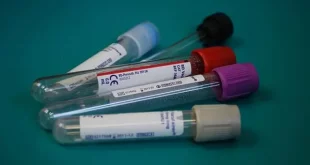What removes alcohol from the body? The removal of alcohol from the body is a complex process that involves several steps and pathways, primarily taking place in the liver but also involving other organs and systems.
The body’s ability to metabolize and eliminate alcohol can be influenced by genetic and environmental factors, contributing to the variation in how individuals process alcohol and their susceptibility to alcohol-related problems.
Metabolism and Elimination of Alcohol
Alcohol is primarily metabolized in the liver through two main enzymes: alcohol dehydrogenase (ADH) and aldehyde dehydrogenase (ALDH). ADH breaks down alcohol into acetaldehyde, a toxic substance known to be carcinogenic. Acetaldehyde is then further metabolized by ALDH into a less harmful substance called acetate, which is eventually broken down into water and carbon dioxide for easy elimination from the body. This two-stage process is crucial for reducing the toxic effects of alcohol consumption and preventing prolonged intoxication.
Other enzymes, such as cytochrome P450 2E1 (CYP2E1) and catalase, also play roles in alcohol metabolism, especially after consuming large amounts of alcohol. However, these pathways contribute to a smaller fraction of alcohol metabolism. Additionally, small amounts of alcohol are directly eliminated through urine, breath, and sweat without being metabolized.
Also Read : How To Get Alcohol Out Of Your System?
Factors Affecting Alcohol Metabolism
The rate at which alcohol is metabolized can vary significantly among individuals, influenced by genetic factors, such as variations in the ADH and ALDH enzymes, and environmental factors like the amount of alcohol consumed and overall nutrition. These differences can affect individuals’ risk for developing alcohol-related health issues, including liver damage, various cancers, and alcohol use disorder.
Health Risks of Alcohol Consumption
Excessive alcohol consumption poses several health risks, impacting virtually every organ in the body. It can lead to liver diseases such as steatosis, alcoholic hepatitis, fibrosis, and cirrhosis. Alcohol also affects the brain’s communication pathways, impairing cognitive functions and coordination. Moreover, chronic drinking can weaken the immune system, making the body more susceptible to diseases like pneumonia and tuberculosis. Importantly, there is a strong scientific consensus that alcohol consumption can cause several types of cancer, including those of the head and neck, esophagus, liver, breast, and colorectum.
The Role of Research and Education
Organizations like the National Institute on Alcohol Abuse and Alcoholism (NIAAA) and educational partnerships like the Alcohol Pharmacology Education Partnership provide valuable research-based information on alcohol’s effects on health and guidance on responsible drinking. Their work underscores the importance of understanding individual differences in alcohol metabolism and the potential health risks associated with alcohol consumption.
The process of alcohol metabolism and elimination from the body illustrates the intricate balance between genetic predispositions, environmental influences, and the inherent toxicities of alcohol consumption. By recognizing these factors, individuals can make informed decisions about their drinking habits, potentially reducing their risk of alcohol-related health issues.
For more in-depth information on alcohol metabolism and its effects on the body, the National Institute on Alcohol Abuse and Alcoholism (NIAAA) and the Alcohol Pharmacology Education Partnership offer extensive resources and research findings. (Addiction)
 Imaxshift.com : Insurance, Finance, Technology & Gadget Blog
Imaxshift.com : Insurance, Finance, Technology & Gadget Blog



